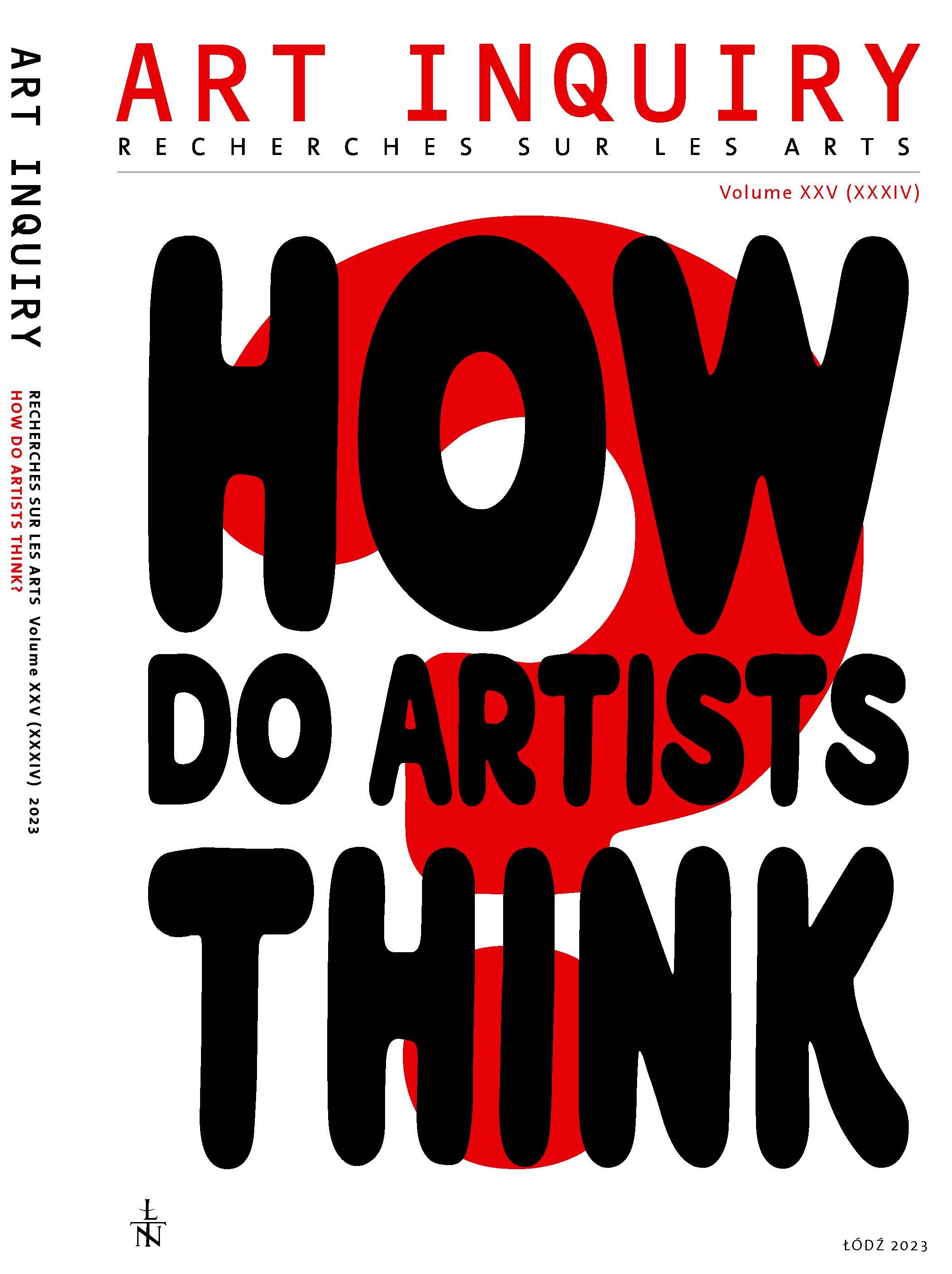Thinking Landscape in Art
DOI:
https://doi.org/10.26485/AI/2023/25/11Keywords:
art, landscape, painting, phenomenology, SztabińskiAbstract
The aim of the article is to analyse contemporary landscape painting as a form of landscape art. The analyses will be illustrated by a discussion of Grzegorz Sztabiński's oeuvre. Landscape art is defined as art which in any medium and in any way questions both the concept of landscape and real landscapes. The author claims that contemporary landscape painting may be treated as a theory or philosophy of landscape expressed in the painterly medium. It makes the invisible visible, i.e., it shows how the world becomes meaningful to people and does this not by representing views of certain places, but by provoking questions on the essence of landscape.
References
Casey Edward S. (2002) Representing Place. Landscape Paintings and Maps, Minneapolis: Min¬nesota University Press, 2002.
Casey Edward S. (2005) Earth-Mapping. Artists Reshaping the World, Minneapolis: University of Minnesota Press.
Daniels Stephen, Cosgrove Denis E. (1988) Introduction. Iconography and landscape, [in:] Iconography and Landscape. Essays on the Symbolic Representation, Design, and Use of Past Environments, eds. S. Daniels, D. E. Cosgrove, Cambridge University Press, Cambridge 1988, pp. 1-10.
Frydryczak Beata, Salwa Mateusz (2021) Landscape art – a new definition and new look, "Art Inquiry", vol. XXIII (XXXXII), pp. 113-123.
Ingold Tim (1993) The Temporality of the Landscape, "World Archaeology", vol. 25, no. 2, pp. 152-174.
Jakob Michael (2009) Il paesaggio. Bologna: il Mulino.
Merleau-Ponty Maurice (1964) Eye and Mind, transl. by C. Dallery, [in:] M. Merleau-Ponty, The Primacy of Perception, ed. J. M. Edie. Evanston: Northwerstern University Press, pp. 153-190.
Salwa Mateusz (2023) Pejzaż w cudzysłowie – Grzegorza Sztabińskiego refleksja wizualna, [in:] Myślenie estetyczne, eds T. Pękala, R. Kubicki. Lublin: Wydawnictwo UMCS, pp. 189-200.
Strauss Erwin (1963) The Primary World of Senses, transl. by J. Needlman. London: Collier-MacMillan.
Sztabiński Grzegorz (2004) Dlaczego geometria? Problemy współczesnej sztuki geometrycznej, Łódź: Wydawnictwa Uniwersytetu Łódzkiego.
Sztabiński Grzegorz (2007) Retrospekcja, exh. cat. Łódź: Miejska Galeria Sztuki w Łodzi.
Sztabiński Grzegorz (2011) Dokumentacja a horyzontalny sposób pojmowania twórczości artystycznej, "Sztuka i Dokumentacja", no. 5, pp. 6-15.
Sztabiński Grzegorz (2012) Tautologie konceptualistyczne. "Sztuka i Dokumentacja", no. 6, pp. 89-95.
Tuan Yi-Fu (1979) Thought and Landscape, [in:] The Interpretation of Ordinary Landscapes: Geographical Essays, eds. D. W. Meinig, J. B. Jackson, Oxford: Oxford University Press, pp. 89-102.
Williams Raymond (1973). The Country and the City, New York: Oxford University Press.
Downloads
Published
Issue
Section
License

This work is licensed under a Creative Commons Attribution-NonCommercial-NoDerivatives 4.0 International License.



